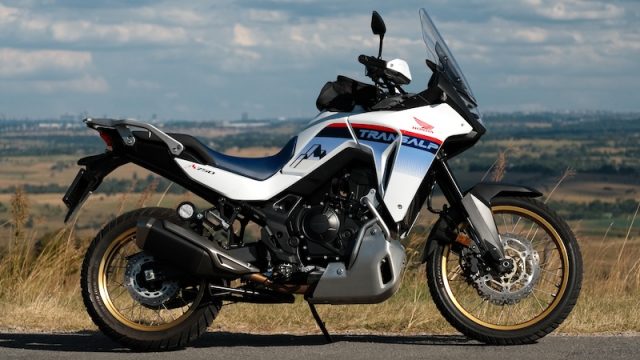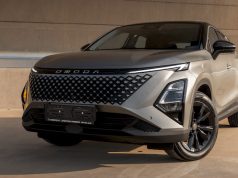The release of the TransAlp marks Honda’s much anticipated re-entry into the middleweight adventure segment and a return of the TransAlp nameplate after a decade long pause. The field is more competitive than ever, but the Honda looks up to the challenge.
Following the trend for the middleweight adventure class, the new TransAlp’s powerplant is a parallel-twin engine with a 270 degree crank, displacing 755 cc. It produces a healthy 67 kW (90 hp) and 75 Nm of torque.
Considering its wet weight of 208 kg, those figures give the bike performance that is lively rather than explosive.
The TransAlp’s suspension consists of non-adjustable Showa forks with 200 mm of travel up front, and a preload adjustable mono-shock out back with 190 mm of travel.
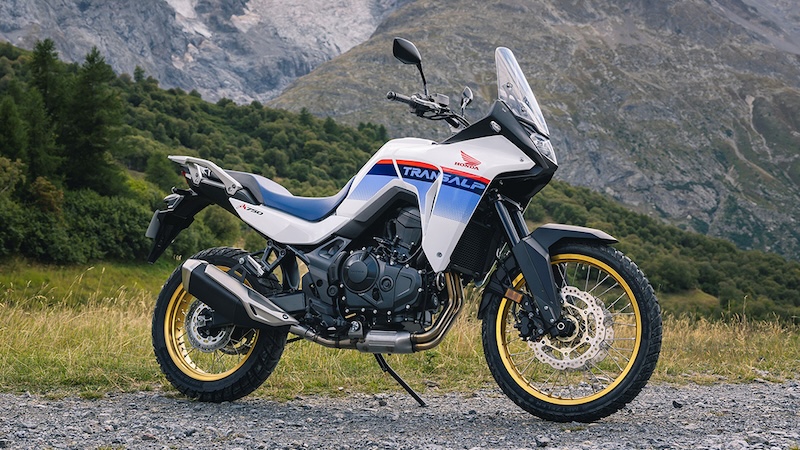
Wheels and seat height
These dampers are paired with the obligatory (for off-roading) 21 inch front and 18 inch rear wheels. Despite the tall suspension and big wheels, Honda has achieved a manageable 850 mm seat height, while an optional 820 mm low seat is available.
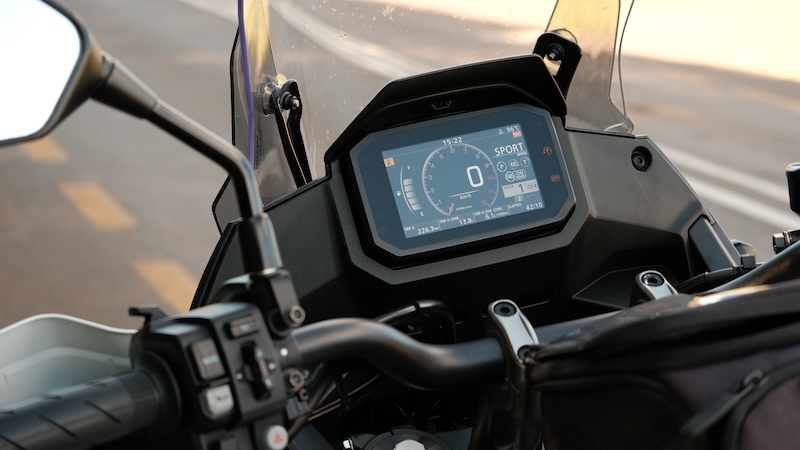
The electronics package is comprehensive and easy to adjust, thanks to the clear menus on the 5-inch TFT display. There are five available rider modes, namely Sport, Standard, Rain, Gravel, and User.
In each of these modes, the level of engine power, engine braking, ABS, and traction control are adjusted, with the User mode allowing for a custom set-up to suit the rider.
A new rider app
It is worth knowing that Honda Southern Africa has recently introduced the Honda RoadSync app, a mobile application “aimed at improving the riding experience for Honda riders,” the company says. The app is available (free) from the iOS App Store and Google Play Store.
“Riders can effortlessly pair the app with their motorcycles and enjoy a host of smart features designed to enhance every ride,” Honda claims. The Box Cutter will be testing this new feature, which includes Google Maps for navigation, in the near future.
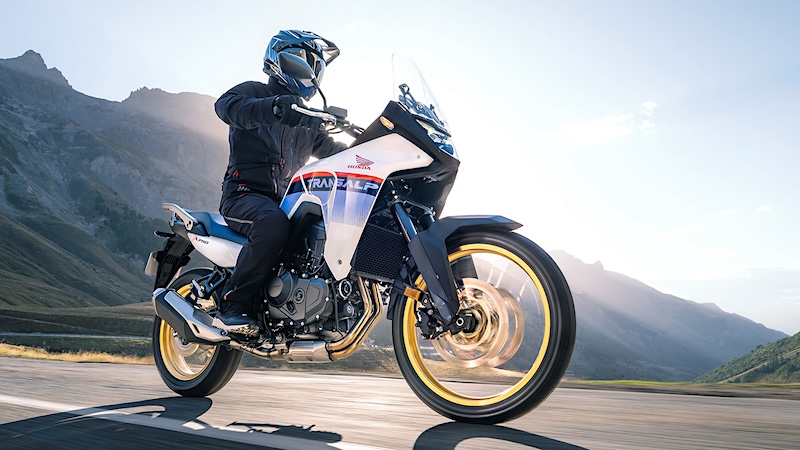
Riding the new Honda TransAlp
In recent years, middleweight adventure bikes have become more off-road capable. For the more hardcore riders, that’s great news.
However, most riders don’t necessarily need 240 mm of suspension travel, or a lofty 880 mm seat height as seen on the more off-road focused KTM 890 Adventure R and Triumph Tiger Rally Pro. Honda seems to have realised this, taking a softer approach to the adventure bike genre with the new TransAlp.
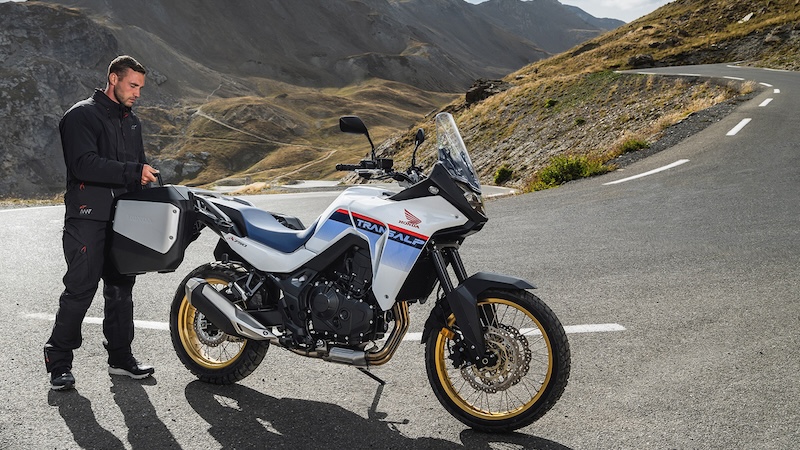
Comfort and ergonomics
This measured approach may not sound appealing, but I’d argue that it’s more beneficial to more riders, and adds to the enjoyment of the machine.
Comfort is an important aspect of a travel bike, and this Honda has it in spades, being a more relaxed proposition than some of its more frenetic (and orange) competitors. The rider triangle is spacious, and the seat is supportive yet well cushioned – much like the suspension.
The long-travel suspension is well damped for most circumstances. It needs to be, considering it’s not adjustable, except for preload at the rear. The only times it felt overwhelmed was on very rocky gravel, or very bumpy and pockmarked tarmac, at which point there seems to be a harshness to the last bit of travel on the forks. However, the bike floats easily over most surfaces.
Handling
Road handling is good, once you get used to it. With the first corner I took, I thought I was about to wash wide and lose the front wheel. (I had much the same feeling on the Africa Twin, at first).
The front-end grip feels vague, even for 21-inch front wheels. However, once I learnt to trust the bike not to fall over, I found its handling to be stable. This is true even when cornering at speed, and the new TransAlp is more agile than you might expect.
As a road machine, it feels fast and capable, and it’s just as happy cruising around sedately as it is to be hustled along at speed.
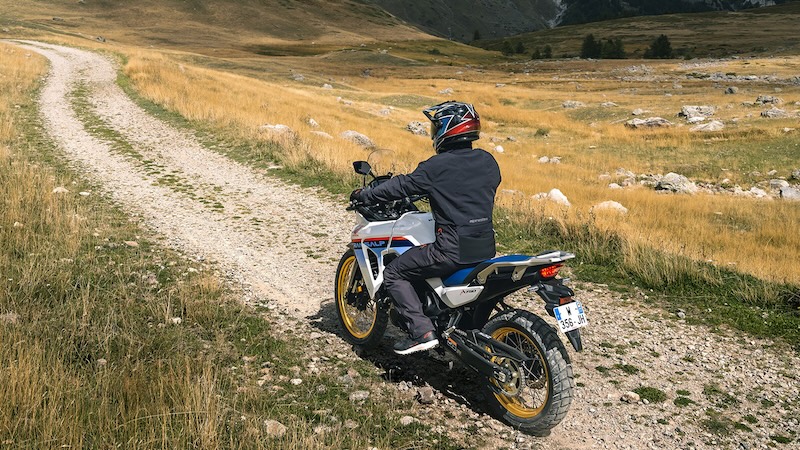
Getting dirty
On dirt, the new TransAlp does a commendable job, as long as you have the right set of expectations for it. A rally bike, it is not.
The name of the rider mode for going off paved roads gives a clue. Honda calls it Gravel, rather than Enduro or Rally, as we see in other bikes in the category, such as the KTM 890 Adventure R.
A skilled rider could no doubt set a quick pace off road with the TransAlp. With my more limited skill, I settled on an easy pace and the TransAlp seemed just fine with that. The test bike was fitted with optional skid plate and engine guards – a must for the off-roady types.
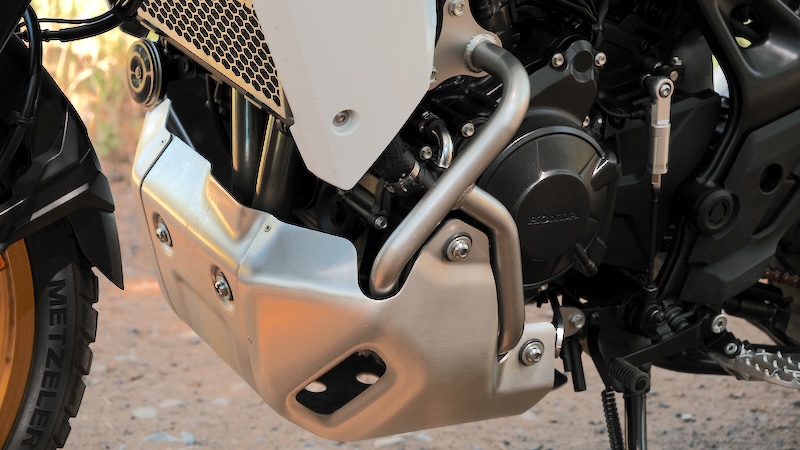
Performance
The engine never feels wanting for power; from highway to twisty roads to off road. On highways, it is an easy bike to ride at silly speeds, with the engine never complaining. It also offers the kind of stability that inspires confidence.
Wind protection is brilliant, especially as the test bike wore the optional touring screen and wind deflectors on the tank (worth it).
When the going gets tighter and twistier, the bike is a joy. It grips well, leans in easily, and has plentiful mid-range grunt to pull you from corner to corner, without ever feeling like it’s working hard. The test bike was also fitted with the optional quick-shifter which works a charm when pushing on.
You may go faster on other bikes, but the TransAlp may still be more fun.
The exhaust note is particularly fruity for a stock can, especially in terms of the Euro 5+ emission regulations.
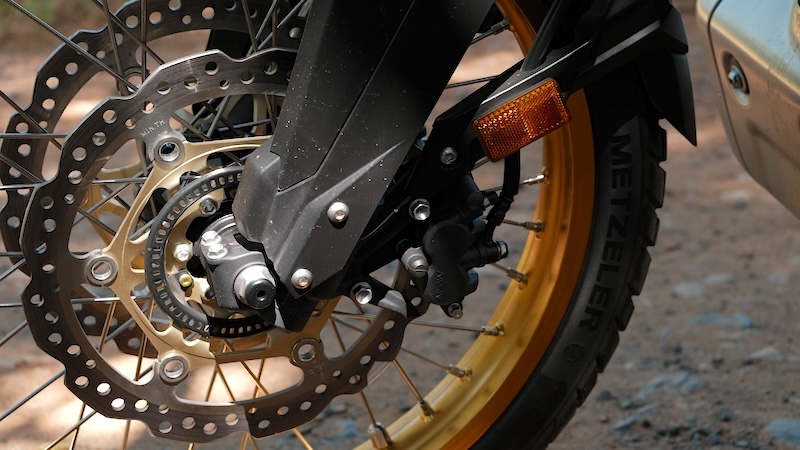
The inevitable complaints
There are some complaints I have for a bike that costs around R200 000. Firstly, for a bike that is so capable of being a long distance tourer, why aren’t heated grips a standard feature? Along the same line of enquiry, why did Honda not include cruise control? These features make long distances and adverse weather an order of magnitude easier to deal with.
My last complaint, while directed at this TransAlp, is really directed at the entire adventure segment. Tubed tyres should be a thing of the past. There is almost no benefit to running tubed tyres, other than to saving money for the manufacturers who don’t have to develop or buy tubeless spoked wheels from a supplier such as Akront.
Tubeless tyres are safer at speed, get better mileage, and don’t leave you stranded if you get a puncture. Especially when considering that the vast majority of adventure bikes will be used on tar, tubeless tires should be a legal requirement.
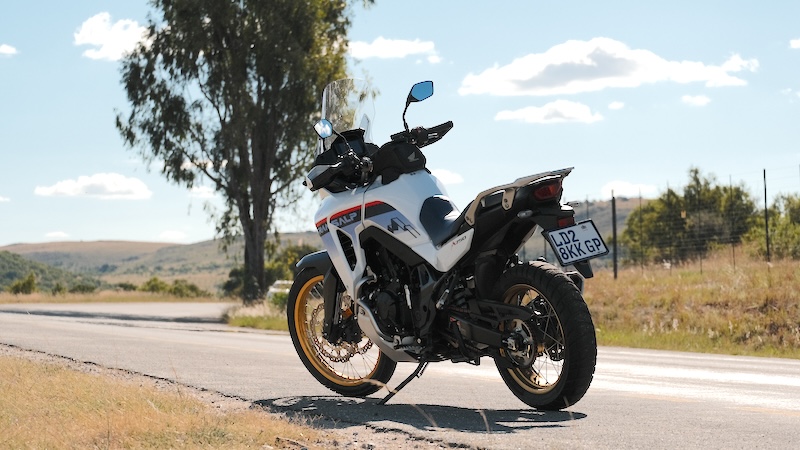
At the end of the day…
I won’t be calling this the Goldilocks adventure bike that excells on highways, dirt roads, and on the commute, because that seems to be what everyone is looking for. If anything, the TransAlp would probably be the bed that Goldilocks found a bit too soft. But if you ask me, she was too picky to be trusted.
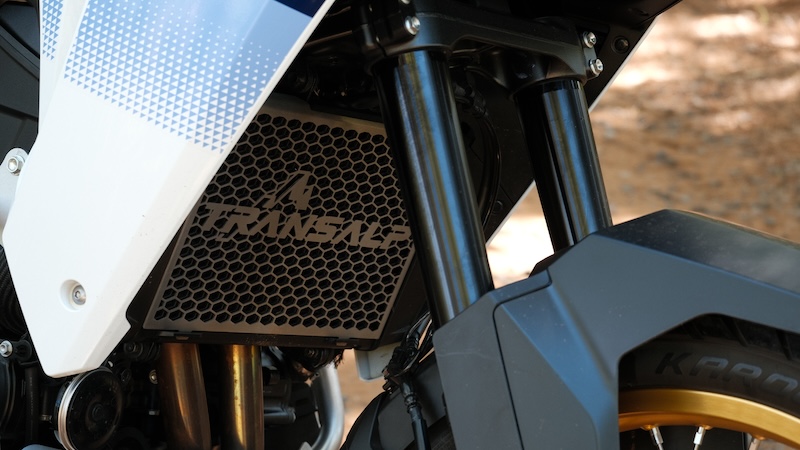
Easy rider
Honda, with this TransAlp, has made a capable middleweight adventure bike, without chasing the likes of KTM. Honda didn’t try to build a Dakar-ready off-road monster. Instead, it has made a softer bike that can handle some dirt, without compromising on-road comfort.
Why the manufacturer went this route, I cannot say. Maybe it conceived the TransAlp as an old-school adventure tourer, with the comfort and ability to cross continents. Or maybe Honda slightly stunted the dirt abilities of the TransAlp to avoid stepping on the toes of the Africa Twin.
Whatever the reason, this adventure bike, with its friendlier approach, definitely has a niche in this most competitive of motorcycle classes.
The Honda XL750 TransAlp scores 4 out of 5.
4.0 out of 5.0 starsSpecifications of the Honda XL750 TransAlp
- Price: R214 199
- Engine: 755 cc, liquid-cooled, parallel twin with 270-degree crank
- Transmission: 6-speed with slipper clutch
- Power: 67.5 kW at 9 500 rpm
- Torque: 75 Nm at 7 250 rpm
- Lights: LED headlight and auto-cancel indicator
- Weight: 208 kg (wet)
- Seat height: 850 mm
- Ground clearance: 210 mm
- Fuel capacity: 16,9 litres
- Warranty: 2 years
- Maintenance: Service annually or every 12 000 km
More detailed specifications are available at Motorcycle Specs.
Read our review of the Honda CB750 Hornet.
And finally…
At the time of writing (July 2024), the list price of the TransAlp is R214 200, but Honda Southern Africa runs special offers from time to time. Like now. Until further notice, the bike is available for R190 000, which includes RockFox crash bars to the value of R15 000. That is a deal not to be sneezed at.


